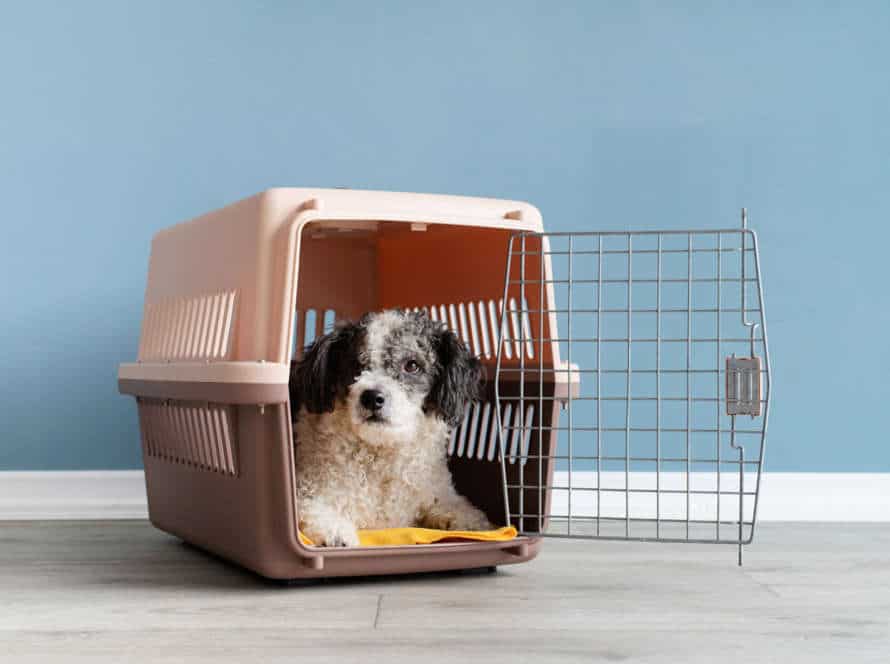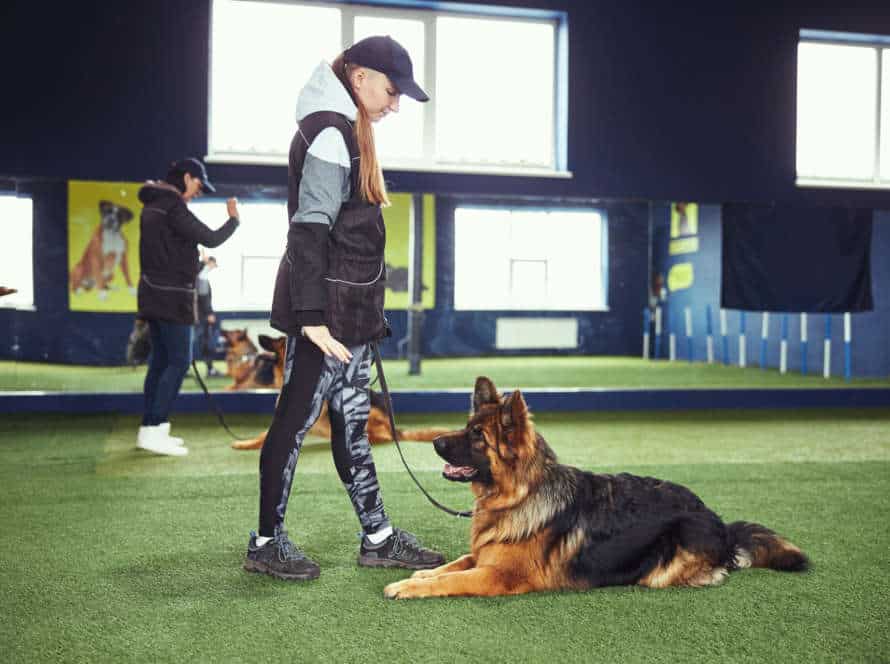Harnesses vs. Collars: Which is Best for Your Dog?
Choosing between a harness and collar for your pup depends on several aspects, such as their breed, size and health. Collars are the most common option, but harnesses offer more advantages.
Harnesses spread out the leash pressure over the chest and back, reducing the risk of throat or neck damage. They’re also perfect for dogs with respiratory issues or neck wounds. Collars can cause neck strain or choking if the pup pulls or stops suddenly. Harnesses give more control over your dog’s movements, particularly for dogs that tug or jump on walks. They also prevent pulling, as they let you redirect them away from temptations.
However, not all harnesses are equal, so make sure it fits well and doesn’t hurt your dog’s skin.
In summary, collars can be suitable for some dogs, but harnesses offer improved safety, control and comfort.
Benefits and Drawbacks of Harnesses for Your Dog
Harnesses are awesome for letting your pet roam without worry of them straying. They offer better control than collars and won’t strain necks or cause discomfort. Despite their positives, harnesses have some downsides too. Let’s take a look at the pros and cons of harnesses for your pup!
Improved Control and Safety
Harnesses can help control and protect your pup. They spread pressure over the body. Great for dogs that pull or have sensitive throats. But, harnesses can be tricky to put on. And, they may not give as much control as a collar.
Collars are easy to put on. They can be used for training. But, they may cause neck pressure and make existing health issues worse. It depends on your dog’s individual needs and behavior. Get advice from a vet or trainer if you’re not sure which option is best.
Suitable for Dogs with Certain Medical Conditions
Harnesses are great for dogs with certain medical issues, as they provide better support and lessen pressure on their necks and spines. For pups with breathing issues, collapsed trachea, or neck injuries, harnesses are even more recommended, as they do not put pressure on their throats.
However, not all harnesses are the same. Front-clip ones can lead to pulling, while back-clip ones can cause chafing and rubbing under their arms. They also limit movement, making it hard for dogs to climb stairs, jump, or play.
On the other hand, collars offer more movement and can be helpful for training and walking. But, they can also cause neck injuries, choke dogs, and worsen medical conditions.
It is essential to talk to your vet and think about your pup’s needs before deciding between a collar or a harness. Also, the proper fit and regular checkups are key to make sure your pup is comfortable and safe.
Pro tip: Get a harness with adjustable straps and padded lining to prevent chafing.
Potential for Chafing, Rubbing, and Overheating
Harnesses for dogs come with pros and cons. It’s important to think about both before choosing one for your pooch. Harnesses provide more control, especially for walks and runs. But, they can cause chafing, rubbing and overheating. Pressure from the harness on the chest and shoulders can lead to chafing and rubbing. Plus, they cover more of the body, trapping heat.
These problems can be avoided by getting the right harness and making sure it fits. What’s best depends on the pup’s needs and behavior. If they are hyper or big and pull, a harness is best. For calmer dogs, a collar may be better.
Tip: Measure chest and neck before buying a harness or collar to get the right fit.
Benefits and Drawbacks of Collars for Your Dog
Dog owners love collars! They are comfy and provide great control for guiding your pup. But, there are a few drawbacks. Let’s explore the pros and cons of using collars to manage your pup.
Easy to Use and Available in a Variety of Materials
Collars for pups are trendy. They come in many materials, making them handy for pet owners to wear. Nevertheless, there are good and bad points to bear in mind when deciding between a collar and a harness.
Benefits of collars include:
- Simple to put on and off, usually secured with a buckle or clasp.
- Normally cheaper than harnesses.
- Different materials available, e.g. leather, nylon, and cotton.
Drawbacks of collars include:
- Can be dangerous for dogs who pull or lunge, as it puts strain on their neck, which can lead to injury.
- May not be suitable for pooches with respiratory or neck issues.
- Some materials may irritate a pup’s skin or cause allergies.
When selecting between a collar and a harness, it is essential to take into account your dog’s personality and needs. Harnesses are often the better choice for dogs that pull or have neck troubles, while a collar may be suitable for dogs that stay calm on a leash.
May Be More Comfortable for Dogs with Certain Body Types
Harnesses may be more suited for certain dog body types than collars. When weighing the pros and cons of the two, a few things should be considered.
Collars are only suitable for dogs that are leash-trained and don’t pull. But dogs with tracheal or respiratory issues could be harmed by collars. Breeds like pugs and bulldogs, with flat faces, also have respiratory problems and do better with harnesses.
- Harnesses can help provide more control and support for large dogs or dogs easily excited on walks.
- And they are comfier for dogs with sensitive areas such as the neck, back, and joints.
It is also essential to get the right type of harness. Poorly fitted ones can result in skeletal, fur, and circulation issues.
Potential for Injury, Choking, and Other Health Issues
Collars are a must-have for any pup-parent. But they can cause health issues like choking and injury. Benefits? They can hold tags, control leash behaviour and keep your pup safe. But misusing them can have serious consequences. For example, collars that are too tight can damage the neck or spinal cord. Harnesses are a better choice, evenly distributing pressure across the chest, shoulders and back. When selecting either type, consider breed, size and behaviour. Ask your vet and a pro dog trainer for help. Pro tip: Always keep an eye on your pup when wearing a collar or harness to avoid potential health issues.
Factors to Consider When Choosing Between Harnesses and Collars
Deciding on the right gear for your furry friend can be hard. Harnesses and collars both have their advantages and disadvantages. Before you make a choice, let’s look at the positives and negatives of each one. That way, you can make an informed decision.
Dog’s Size, Breed, and Body Type
Harness or Collar? Consider your pup’s size, breed and body type.
For why?
- Size – Harnesses are better for smaller dogs. They distribute weight more evenly, reducing injury chances. Collars may be better for larger dogs, as they offer more control.
- Breed – Slender-necked breeds, like greyhounds and whippets, benefit from a harness that doesn’t put pressure on their windpipe. Thick-necked breeds, like bulldogs, need wider collars for comfort.
- Body Type – Short-snouted dogs and those with respiratory issues should avoid collars that restrict breathing. Harnesses might be a better, safer choice.
In conclusion, the decision depends on your pup’s needs. Size, breed and body type matter.
Activity Level and Behavior
When selecting a collar or harness for your pup, ponder their level of activity and conduct.
If your doggy is highly energetic, pulls on the leash, or escapes their collar, a harness is the top choice. It distributes the strain across their chest and shoulders, taking the pressure off their neck and spine.
Conversely, if your four-legged friend behaves, stays calm on a leash, and has no breathing or neck issues, a collar may work.
Be mindful that some breeds may need a certain type of harness or collar. Bulldogs may require a front attachment harness to stop pulling, and greyhounds may need a martingale collar to avoid escapes.
Consult a vet or dog trainer to find the ideal option for your pup, based on their individual needs and behaviour.
Training and Obedience Level
Choosing between harnesses and collars for your pup is significant. Harnesses are better for those that pull and have breathing problems. This is because pressure is taken off the neck and spread over the chest and shoulders. Harnesses are also recommended for training, as they provide more control and discourage pulling.
Collars, on the contrary, are better for well-trained pups with good leash manners. They are also ideal for those with short hair, as harness contact can lead to irritation or matting.
It is important to select the right equipment for your pup’s requirements and comfort. Consult with a professional trainer or vet if you’re uncertain which option is best for your furry friend.
Conclusion: Which Option is Best for Your Dog?
Selecting the top choice for your pup? Difficult! Harnesses and collars? Both have benefits. So, which is best for your pooch? Let’s look closer. Pros and cons of both – so you can decide what’s best for your pup.
Summary of the Benefits and Drawbacks of Harnesses and Collars
Collars and harnesses are two popular options for walking your pup. Collars are easy to use and come in many styles. They give you control of your pup quickly. However, some dogs with respiratory issues may not be able to wear collars.
Harnesses offer more control and are better for dogs that pull or have breathing problems. The pressure is distributed more evenly across the body and they’re less likely to cause injury. But they may take time to get used to.
The best option for your pet depends on their individual needs and preferences. Ask a vet or trainer which is best for your furry friend.
Guidelines for Choosing the Right Harness or Collar for Your Dog
Finding the perfect harness or collar for your pup can be overwhelming with so many choices. Here are some guidelines to help you decide:
- Harnesses:
- Great for dogs with breathing problems, neck injuries, or short-snouted breeds.
- Adjustable to reduce pulling and choking.
- Not suggested for anxious dogs or those who pull a lot.
- Collars:
- Best for trained dogs used to walking on leashes.
- Usually cheaper and come in various styles.
- Not recommended for dogs with respiratory issues or neck injuries.
Before you pick one, consider your pup’s breed, age, health, and behavior on walks. Both harnesses and collars have their advantages and disadvantages. Ultimately, it’s up to you and your doggie to decide what works best.
Personal Experience and Recommendations from Pet Owners and Veterinarians.
Deciding between a harness or collar for your pup can be tricky. Talking to pet owners and vets can help. Harnesses are popular due to their advantages. They reduce strain on the neck and trachea and give owners more control. Collars are simpler and better for well-behaved pups. It really comes down to your pup’s needs and behavior, so talk to your vet or a trusted pet owner for advice.
Frequently Asked Questions
1. What is the main difference between a harness and a collar?
A: A harness goes around your dog’s chest and shoulders, while a collar goes around their neck.
2. What type of dog is best for a harness?
A: Any dog can wear a harness, but they are especially useful for dogs with short noses, like pugs or bulldogs, and dogs with neck issues.
3. Is it true that harnesses are better for dogs than collars?
A: Not necessarily. It depends on the individual dog and their needs. For example, a collar may be better for a well-behaved dog that doesn’t pull on their leash, while a harness may be better for a dog with a tendency to pull.
4. Are there any downsides to using a harness for my dog?
A: Some dogs may not feel comfortable wearing a harness, especially if they’ve only ever worn a collar before. In addition, some harnesses can be difficult to put on or take off.
5. What type of collar should I use for my dog?
A: This depends on your dog’s size, behavior, and any specific health issues they may have. A basic flat collar may be suitable for a well-behaved dog, while a head halter or martingale collar may be better for a dog that pulls or lunges on their leash.
6. Can I use both a harness and a collar on my dog?
A: Yes, you can use both a harness and a collar, but it’s important to make sure they are both fitted correctly and that your dog is comfortable wearing them.







